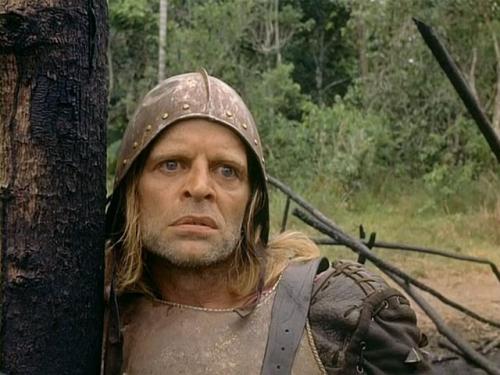 Contained within an hour and a half of 35mm film we are taken on a journey through the wide and sprawling Amazon jungle. The film’s premise allows the action to develop organically, the plot is never forced to move forwards, more coaxed by circumstances.
Contained within an hour and a half of 35mm film we are taken on a journey through the wide and sprawling Amazon jungle. The film’s premise allows the action to develop organically, the plot is never forced to move forwards, more coaxed by circumstances.
Werner Herzog’s filmmaking style greatly helps the action, with the whole film shot in the same period of time as the action itself. This lends the film a realism normally reserved only for documentaries, the actors’ tiredness is real, the state of their surroundings has naturally degraded and even their hair has grown a realistic amount. You feel that the rivalries and anger played out in these ‘Lord of the Flies’ style arguments come from genuine pools of hatred and despair.
It would be easy to praise Klaus Kinski for holding the film on his shoulders, but I feel that this is only true of the second and third acts. In this film, as in life, the protagonists are not revealed from the outset but rather grow into their important roles. In fact, Kinski’s presence throughout the film seems somewhat understated, like an invisible dictator he controls without the need for presence or violence. An astoundingly powerful performance which gains momentum even as the character loses control. By the end of the film you almost believe that this powerful and compelling man will find what he searches for and conquer a continent alone. This is the extent to which the world in the camera’s view has degenerated, as the very metal and wood has rusted and grown algae, as men have faded slowly from existence, even as a monk becomes a mutineer only the force of Aguirre, albeit twisted, has survived.
Cinematographically the film is a masterclass in subtle colours. In the heart of the Amazon rainforest the palette of the film rests mainly in shades of green and brown. Herzog’s use of contrasting colours in costumes, and even in the fake blood used, makes these elements more visually important. Anything that is lost leaves the screen in a final bright, pure colour before never being seen again. Once more the scenes with Kinski shine, his monologues being some of the most effective scenes in the film, including a single glance to camera, perhaps the most poignant moment in the whole film.
Two musical motifs appear in the film, both are haunting in their own way. The piece which accompanies the opening sequence, a stunning wide shot of the troupe carving through the Andes, has an unnatural quality which serves to heighten the oppressive unease throughout the film. Each time the piece recurs the situation has got to a point where you almost cannot imagine worse; but rest assured, the worst is yet to come. It is fitting therefore that the film ends as it began with this music, promising no hope for the lone survivor, despite his power.